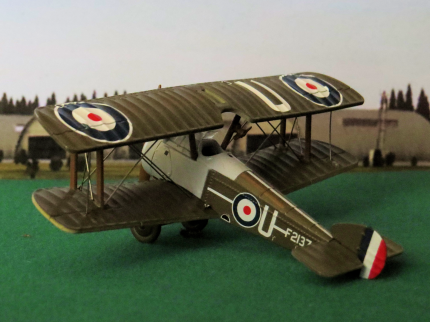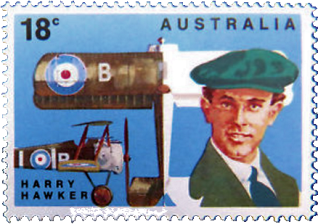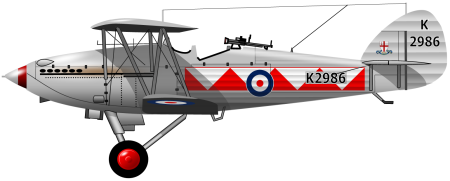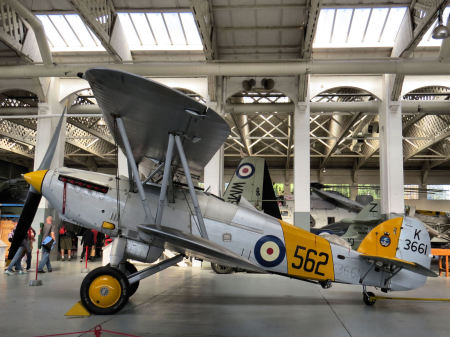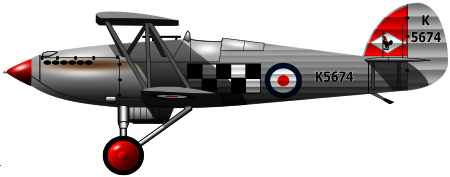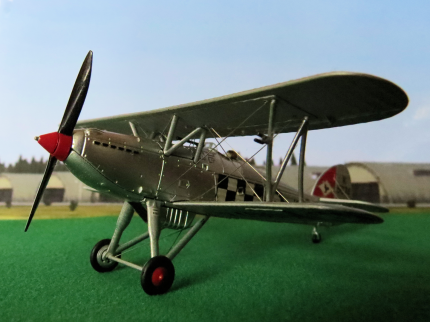
Hawker Aircraft 1920-1934
Harry Hawker was born on 22 January 1889 at Moorabin, Victoria, Australia. He qualified as a car mechanic but moved to England in 1911 to pursue a career in aviation. After working as a car mechanic for a number of companies he finally got a job as a mechanic for Sopwith Aviation Company in June 1912.
Tom Sopwith taught Hawker to fly and he got his pilot’s licence in September 1912. He soon became chief test pilot for Sopwiths. Hawker married Muriel Alice Peaty at St Peter's Church, Ealing on 14 November 1917. They had two daughters.
A 1/72nd model of Sopwith Camel F2137/U as flown by Capt Donald R MacLaren DSO, MC & Bar, DFC, 46 Sqn RFC 1918. MacLaren was a Canadian ace, scoring 54 victories during 1918.
Performance Camel F1
Powerplant One 130hp Clerget 9B 9-cylinder rotary engine
Maximum speed 113mph
Range 300 miles ferry range
Ceiling 19,000ft
Armament consisted of two .303 Vickers IV machine gun synchronised to fire through the propeller. A total of 5,490 Camels were built.
In September 1920, Sopwith Aviation was liquidated. Apparently this may have been amid fears that the government were going to examine the contracts of suppliers to the First World War effort and impose crippling retrospective taxes on them.
Tom Sopwith, Fred Siegrist, Bill Eyre and Sopwith chief test pilot Harry Hawker formed a new company. They each contributed £5,000 and, to avoid confusion with the old company, they named it HG Hawker Engineering which was renamed Hawker Aircraft in 1933.
1978 postage stamp issued by Australian Post
Hawker was killed on 12 July 1921 when his Nieuport Goshawk crashed at Hendon Aerodrome. He is buried in St Pauls' Church, Hook, Chessington, Surrey. He won a number of awards including the MBE and AFC.
In 1922, senior draftsman Sydney Camm joined the Hawker Engineering Company. Camm’s world-renowned designs would make Hawker’s one of the most important aircraft manufacturers in Britain for many years to come. To read more about Camm’s life and career click the button below:
The Hawker aircraft described on this page are Camm-designed before Hawker Aircraft created their factory at Langley Airfield.
Cygnet
Camm designed the Hawker Cygnet to compete in a number of light aircraft competitions from 1924. Two aircraft were built one registered G-EBJH and the other, G-EBMB, won the 100 mile International Handicap Race in 1925 and 1926. The engine was a Bristol Cherub 2 cylinder piston engine producing 34hp and the maximum at a speed was over 75mph. G-EBMB survived and is on display at RAF Cosford, Shropshire.
Performance Cygnet
Powerplant One Bristol Cherub III 2 cylinder piston engine, 34 hp (25 kW)
Range 510 miles
Maximum speed: 71 kn (82 mph, 132 km/h) at sea level
Service ceiling:8,900 ft (2,700 m)
Wing loading: 5·75 lb/ft² (28.2 kg/m²)
Power/mass: 0·036 hp/lb (0.058 kW/kg)
Climb to 5,000 ft (1,520 m): 11 min 20 sec
Tomtit
The Tomtit was designed as a replacement for the Avro 504N trainer. It was built of steel and duralumin tubes covered in fabric. The prototype flew in November 1928. 24 aircraft were supplied to the RAF for evaluation. The Tomtit lost out to the Avro Tutor for the RAF contract and only 35 were built.
Hart and related aircraft
Hart
The Hawker Hart was designed by Camm in 1928 as a light bomber. It entered service with No 33 Squadron RAF in 1930. Harts were deployed to the North-West Frontier in India between the World Wars and the Middle East during the Abyssinia Crisis 1935-36. A volunteer Swedish squadron fighting on the Finnish side in the Winter War of 1939-45 successfully used four Hawker Harts as dive bombers.
Hart K2986 of No 600 City of London Squadron, RAuxAF, Hendon, 1935
Performance Hart
Powerplant One 510hp Rolls-Royce Kestrel IB
Maximum speed 185mph at 13,000ft
Range 430 miles
Ceiling 22,800ft
Power/mass 0·11hp/lb
Armament consisted of one forward-firing .303 Vickers machine gun synchronised to fire through the propeller and one .303 Lewis gun in rear cockpit. Up to 500 lb bombs under lower wings. A total of 1,004 Harts were built. The Audax, Demon, Hardy, Hind, Osprey, Hartbeest were essentially variants of the Hart.
Demon K8203 and Hind K5414/XV of the Shuttleworth collection at Old Warden, Bedfordshire
Performance Hind
Powerplant One 640hp Rolls-Royce Kestrel V
Maximum speed 185mph at 15,500ft
Range 430 miles
Ceiling 26,400ft
Power/mass 0·14hp/lb
Armament
1 × synchronised forward-firing .303 in (7.7 mm) Vickers gun and 1 × .303 in (7.7 mm) Lewis gun in rear cockpit
Up to 510 lb (231 kg) bombs under wings. A total of 528 Hinds were built.
Fury
The Fury I entered service with No 43 Squadron RAF in 1931 and later No 1 and No 25 Squadrons. Fury IIs began to enter service in 1936. The Fury was the first British interceptor fighter to have a top speed that exceeded 200mph. The Nimrod was a navalised version of the Fury.
Fury Mk I K5674 of 43 Squadron, ‘The Fighting Cocks’.
The aircraft is airworthy and operated by the Historic Aircraft Collection, Duxford
Performance Fury Mk II
Powerplant One 640hp Rolls-Royce Kestrel IV
Maximum speed 223mph at 16,500ft
Range 270 miles
Ceiling 29,500ft
Power/mass 0·18hp/lb
Armament consisted of one forward-firing .303 Vickers IV machine gun synchronised to fire through the propeller. A total of 275 Furies were built.
My name is Gary Flint. I'm author, photographer & illustrator for Postcards from Slough. If you wish to make any comments on the contents of the website please click on the ladybird below:
Gary Flint
08/03/1961 - 09/04/2019
Postcards from Slough is an independently funded website. We are open to offers of sponsorship from companies that have any connections to the town. To contact us please click on the ladybird below:
Chalvey Community Forum
Postcards from Slough is linked with a local action group the Chalvey Community Forum. The group liaises with various local organisations in order to improve the quality of life for residents in the ward of Chalvey and Salt Hill. To learn more please click on the maidenhair leaf below:
Museum of Berkshire Aviation
I volunteer as a guide at the Museum of Berkshire Aviation. It is a special museum and if you would like to know more about the museum then please click on the motif below:
To learn more about the museums activities while staying within this website click on the tab at the top of the page or on the motif below:
Graces Guide
Postcards from Slough uses some images from Grace's Guide. Click on the button below:
British Listed Buildings
Postcards from Slough contributes material to British Listed Buildings and uses the site for cross referencing purposes. Click on the button below:
